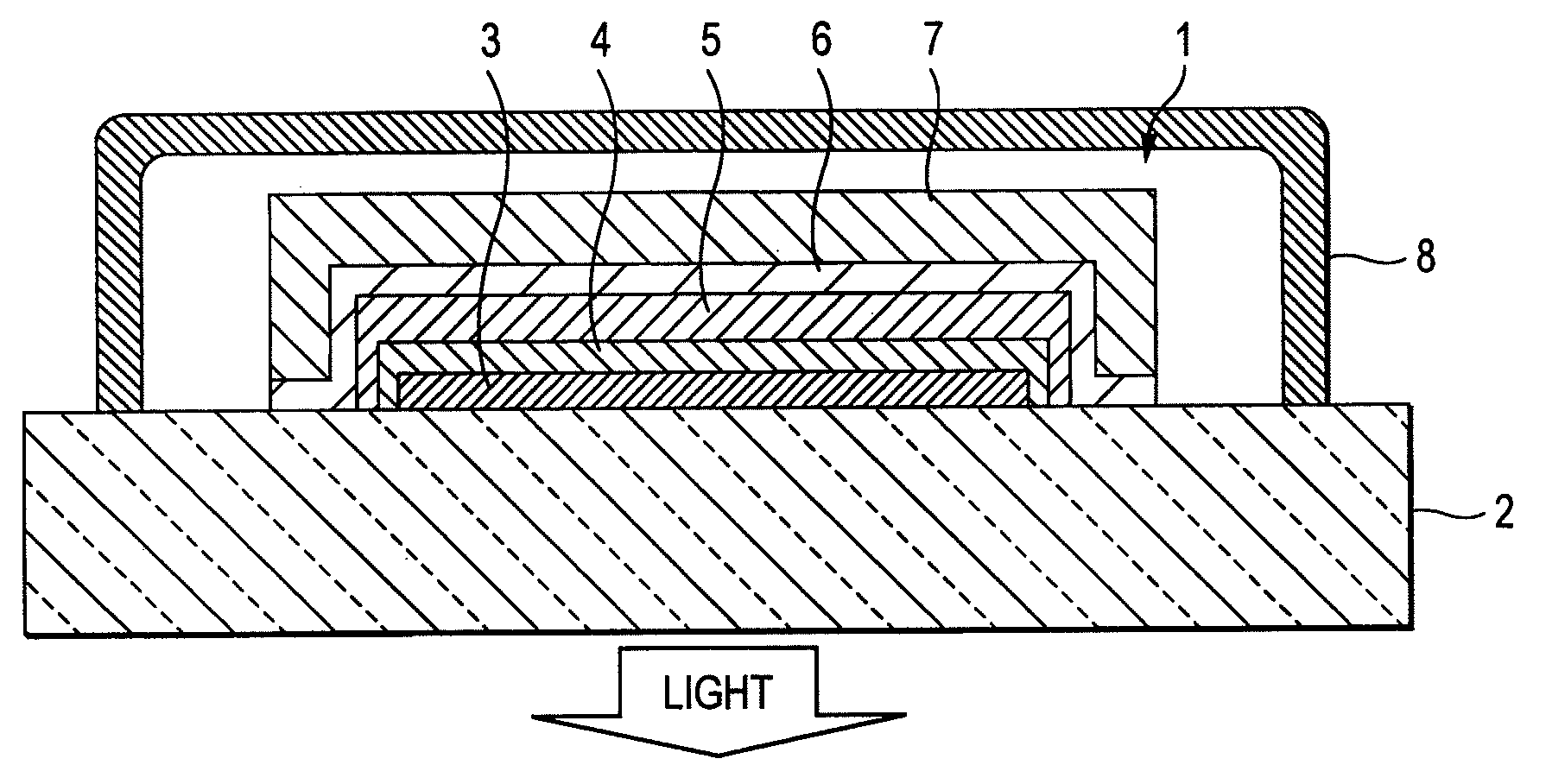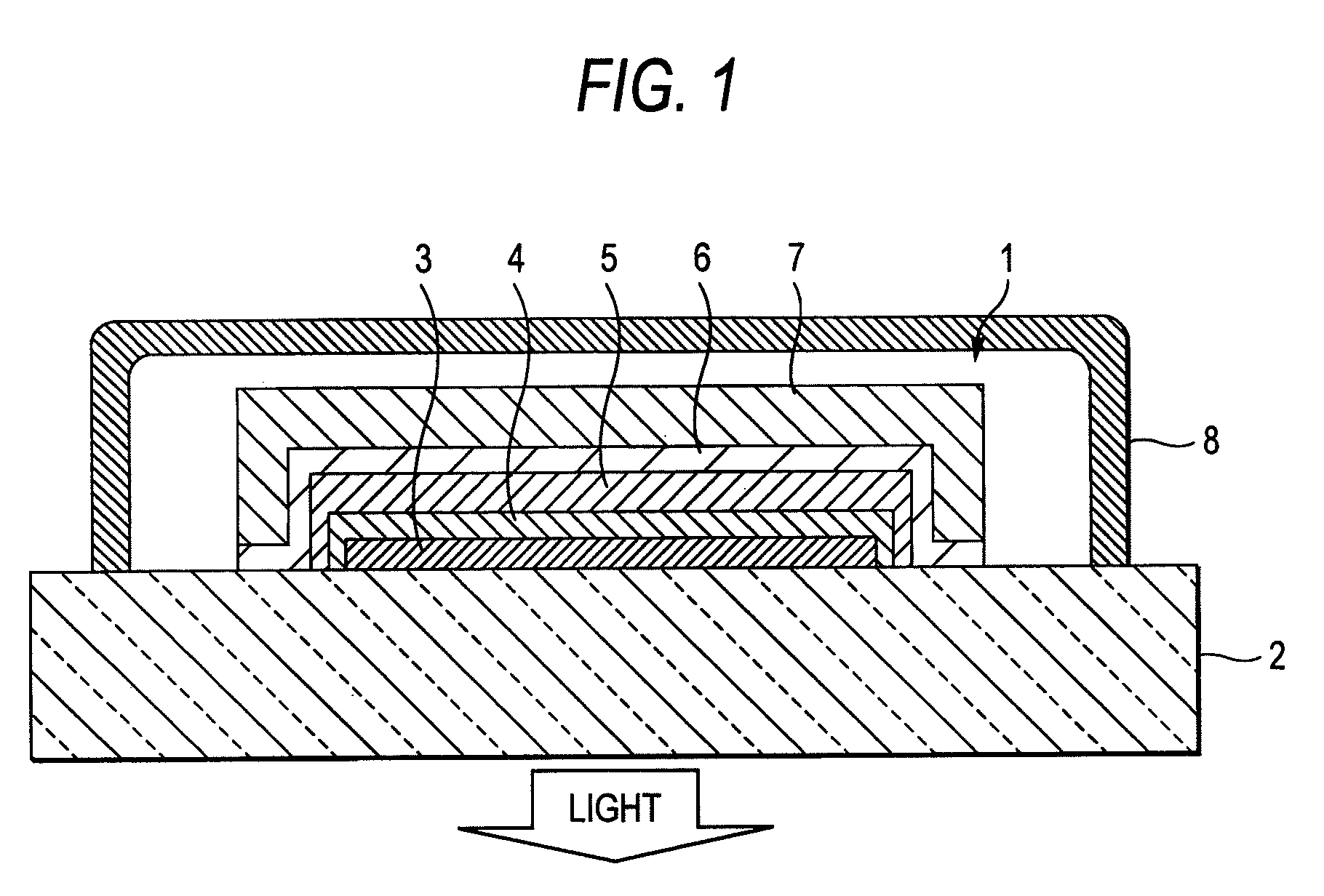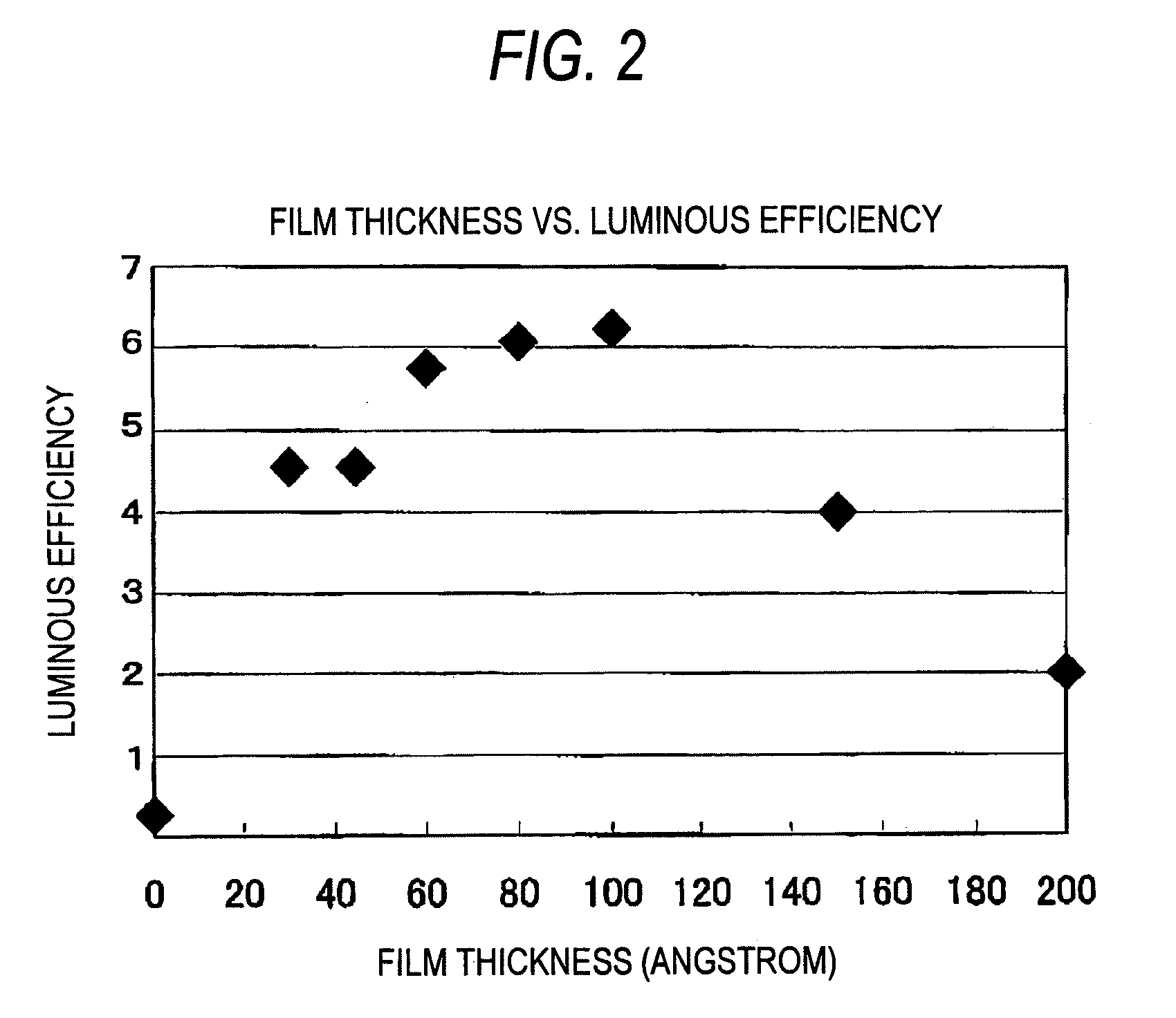Organic electroluminescent device and method for manufacturing the same
a technology of electroluminescent devices and organic materials, which is applied in the direction of layered products, printing, chemistry apparatuses and processes, etc., can solve the problems of insufficient full-scale study of practical implementation, difficult blue light emission, and inability to achieve full-scale study. , to achieve the effect of uniform light emission, increased covering effect relative to the organic layer, and high luminan
- Summary
- Abstract
- Description
- Claims
- Application Information
AI Technical Summary
Benefits of technology
Problems solved by technology
Method used
Image
Examples
example 1
[0096]The structure of the organic electroluminescent device is hereunder described in detail with reference to FIG. 1.
(1) Substrate:
[0097]As the glass substrate 2 of FIG. 1, any material is useful so far as it has a mechanical or thermal strength and has a strength capable of holding an organic electroluminescent device. In the case where it is used as a surface from which light emission from the organic layer is extracted, any transparent or translucent material is useful so far as it has a function to effectively transmit light therethrough.
[0098]Also, though it is preferable that the glass substrate 2 is insulating, but there are no particular limitations. The glass substrate 2 may have conductivity within the range where the action of the organic electroluminescent device 1 is not hindered, or depending upon applications.
[0099]The glass substrate 2 is a colorless and transparent substrate as a first substrate. Examples of the glass substrate 2 which can be used include transpar...
example 2
[0169]In the foregoing Example 1, zinc oxide as the metal oxide was deposited by adopting a sputtering method as the deposition method of the electron injection layer. However, in Example 2, for the purpose of realizing a preparation process of an organic electroluminescent device which does not require a high-vacuum process requiring a large amount of plant and equipment investment, such as a vapor deposition method or a sputtering method and which is able to significantly minimize the plant and equipment investment, the deposition of an electron injection layer made of a metal oxide was carried out by adopting a plating method which is a wet process for a method of depositing the electron injection layer.
[0170]According to Example 2, the electron injection layer deposited on the cathode 7 which is a counter electrode is an extremely thin film, and therefore, zinc deposited on the cathode 7 is oxidized in a bath or the atmosphere immediately after the plating treatment.
[0171]Accord...
PUM
| Property | Measurement | Unit |
|---|---|---|
| thickness | aaaaa | aaaaa |
| thickness | aaaaa | aaaaa |
| thickness | aaaaa | aaaaa |
Abstract
Description
Claims
Application Information
 Login to View More
Login to View More - Generate Ideas
- Intellectual Property
- Life Sciences
- Materials
- Tech Scout
- Unparalleled Data Quality
- Higher Quality Content
- 60% Fewer Hallucinations
Browse by: Latest US Patents, China's latest patents, Technical Efficacy Thesaurus, Application Domain, Technology Topic, Popular Technical Reports.
© 2025 PatSnap. All rights reserved.Legal|Privacy policy|Modern Slavery Act Transparency Statement|Sitemap|About US| Contact US: help@patsnap.com



